Choosing mountain bike shoes is a crucial step in our preparation, because much of bike control on rough terrain starts right from the foot. In downhill and enduro, the so-called gravity disciplines so dear to us, the most important phases of racing are the ones with a standing riding position, when the points of contact between rider and bike are hands and feet only. We’re interested in the latter.
If choosing gloves mainly comes down to the season, choosing the right mountain bike shoes for downhill and enduro is definitely more complicated. We often look at what our favorite athletes are doing, but what’s best for them isn’t always the best for an amateur, too. Let’s take a look at the different possibilities.
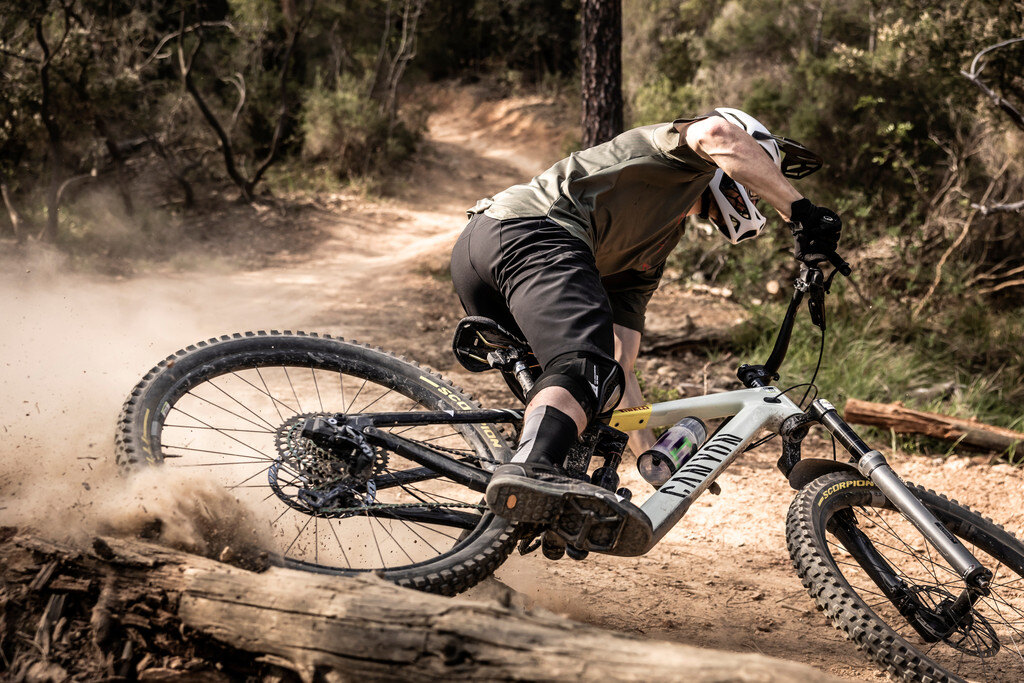
The first and most important distinction to consider is between cross country shoes and enduro or downhill shoes, which we’ll deal with in this guide. But let’s briefly describe the difference between the two types:
Getting into the nitty-gritty of choosing enduro or downhill shoes, the most important factor is the sole, inevitably linked with the pedal, which has to be compatible – flat or clipless? For those new to the discipline, here’s a brief explanation of the meaning of the two terms. Mountain bike shoes for flat pedals are named that way simply because the point of reference is a flat pedal, with no attachments. The grip of sole on pedal is ensured by the rubber compound and pins on the surface of the pedal, pins about a 16th of an inch high that penetrate the sole and guarantee control.
The term ‘clipless’ is less intuitive. In the early days of mountain biking, some raced with the classic toe clip cage pedals you put your foot in. People soon realized it wasn’t the best solution because it didn’t allow the foot to be released immediately in dangerous situations. It was at that point that the SPD mechanism was invented, with a system of cleats and springs that allows the pedal to be released with a simple outward motion of the ankle. These new pedals were called clipless since they did away with the toe clip system.
Mountain bike shoes for flat pedals are the easiest to use, especially for those who are getting into downhill or enduro. The steepest and most challenging sections of the trails can be intimidating; having your foot locked can lower confidence for people without much experience.
Flat-soled shoes are also significantly more comfortable for walking, especially if on rocky or uneven ground. Pushing a bicycle isn’t such a rare occurrence, especially for people fond of long alpine all-mountain rides, where you always might have to deal with some overly steep sections on foot, whether uphill or downhill.
Clipless shoes, on the other hand, are usually for more performance-oriented riders. They provide an otherwise unattainable connection with the bike. The foot locks onto the pedal for the most complete feel for the bike, and they let you safely tackle jumps and complex maneuvers that would otherwise risk feet coming off the pedal.
But clipless mountain bike shoes aren’t only for riders with particularly advanced technique. For example, anyone converting to enduro after years on a cross country bike will likely already be used to this type of shoe, which is almost a necessity in XC.
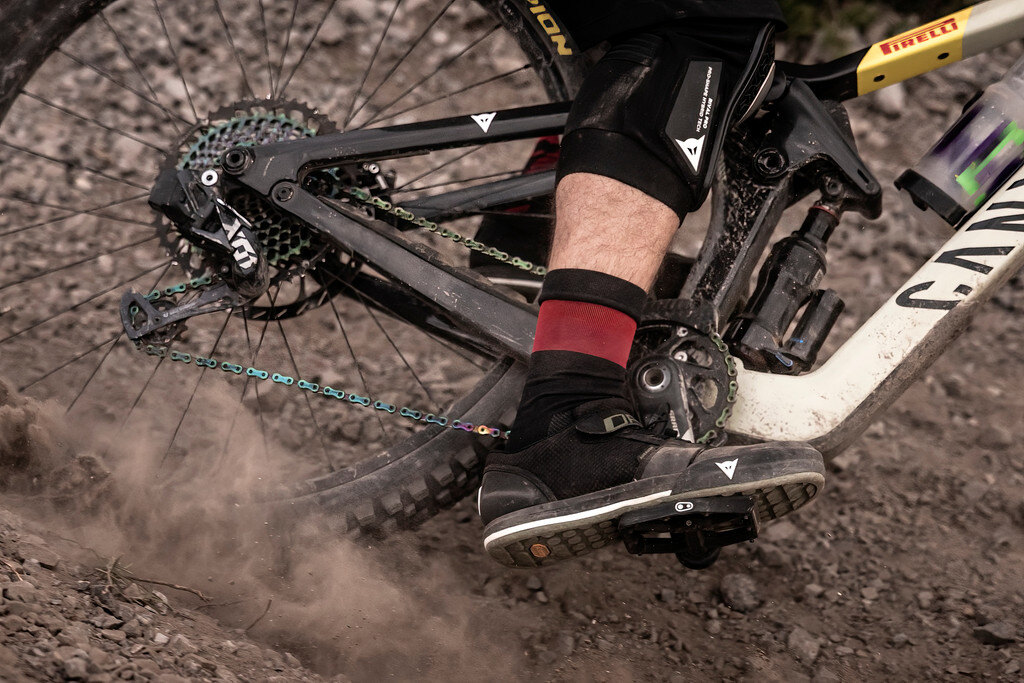
The choice of one over the other doesn’t come down to the rider’s skill level alone. True, if we looked at professional athletes we’d notice that the vast majority of them use clipless pedals and shoes, but the case of Sam Hill is famous, a multiple downhill champion who has also gone down in history for always using flat pedals and shoes. However, he’s the only one that comes to mind at the highest level.
It’s another matter with very muddy outings, where clipless pedals might have problems reengaging, which might force us to ride with shoes disengaged for a stretch. That’s a situation to avoid wherever possible, because it doesn’t guarantee good control of the bike, above all if the route has technical sections. So in heavy mud, even a rider who usually uses clipless pedals and shoes might convert to flats. For that matter, a periodic refresher – i.e. training – on how to ride with flat pedals can benefit even the most experienced riders.
Now let’s see what the components of an MTB shoe are to help us make the best choice of footwear for our requirements.
As explained so far, the sole probably has the most important role out of all the components of a mountain bike shoe – one way or another, clipless or flat, it has to ensure that we have perfect control of the bicycle. But it’s not just a matter of grip or, in the case of clipless shoes, the cleat.
In enduro and downhill too, the rigidity of the sole is crucial, since much of the body’s weight rests on the feet and therefore the soles when riding downhill. A sufficiently stiff sole means the foot and leg muscles don’t have to “work overtime” to keep us in the best position. On the contrary, it dramatically reduces unwanted bending or twisting under stress and allows the right input for riding to be transmitted to the pedal effectively, and not lost. On the other hand, a sole that’s too stiff would be uncomfortable; that makes it necessary, as is often the case, to make the appropriate compromise for your needs, whether they relate more to outings with friends or to the world of racing.
In addition to the structural rigidity of the sole, in the case of the flat shoes the rubber compound used in the layer in contact with the pedal is also very important. It has to achieve the right point of balance between softness and durability. A very soft rubber ensures great grip on both the pedals and the ground, but if it’s too soft it will tend to wear out quickly and not stand up to abrasion, cuts and tears, which aren’t unlikely when trail riding.
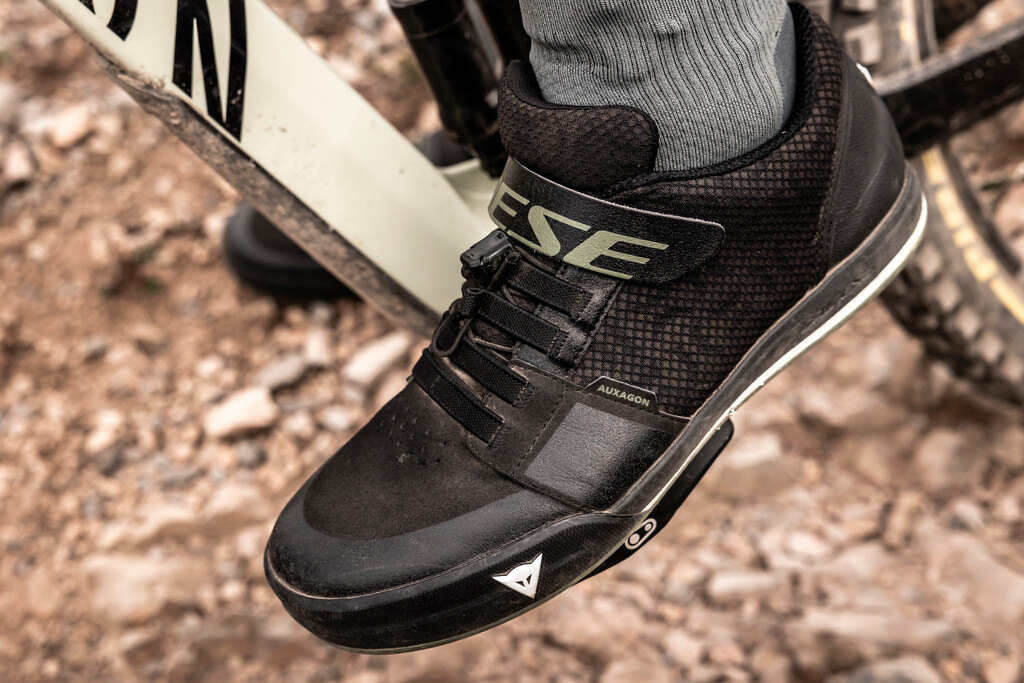
In the case of clipless shoes, the sole compound is less relevant because the sole doesn’t rest on the pedal, even on ones with a platform, and contact is ensured by the locking mechanism alone.
The upper is the upper part of the shoe, the one that wraps around the foot. It has to be firmer than the one for a regular sneaker, both because of the need to control movement and for protection in case of impact, which isn’t so rare. You don’t need to fall to knock your feet against stones or roots, especially in narrow passages. Also, when riding downhill, it’s not uncommon to take one foot off the pedal to locate the right balance when cornering, especially on slippery or sloping terrain.
In particular, when choosing mountain bike shoes for enduro or downhill, it’s a good idea to look for models made of reinforced materials like EVA, a high-density sponge characterized by great strength and compactness even in layers with minimal thickness. Other reinforcements are necessary and, generally, present in the toe area and at the heel.
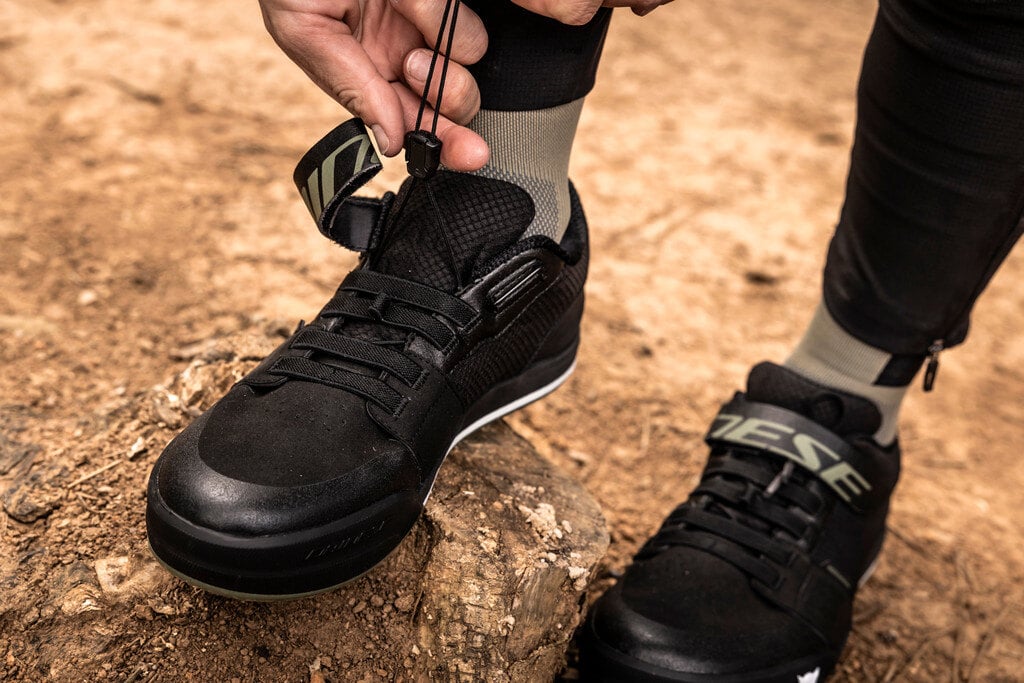
When choosing mountain bike shoes, different fastening systems should be considered, each with their own pros and cons. The most classic is traditional laces – the main advantage is their simplicity. In any condition, even mud, they can easily be undone and retied; they can also be replaced easily in the unlikely eventuality that they break. The main disadvantage is that they can always come undone on their own, but a simple double knot will be enough to remove this risk.
A more modern solution is the quick-slide lace, which can be adjusted millimeter by millimeter according to the volume of the foot in no time at all. This is the system used on Dainese’s HgMATERIA PRO and HgACTO PRO shoes called the PER-FIT System (Precision Elasticated Retaining), where the lace works in synergy with four elastic bands located on the instep and a Velcro strap, which can also be adjusted as desired; the system as a whole ensures optimal foot containment and perfect stability for the shoe.
Other effective fastening systems used on mountain bike shoes are ones with a rotor or ones with Velcro bands only. The latter is the simplest, especially common on shoes with aggressive price points. Rotor system are instead more sophisticated, the best known being the BOA®-branded system. The rotor stretches a cable that runs along the instep area, of varying length depending on the model, adjusting the width of the fit and distributing pressure evenly.
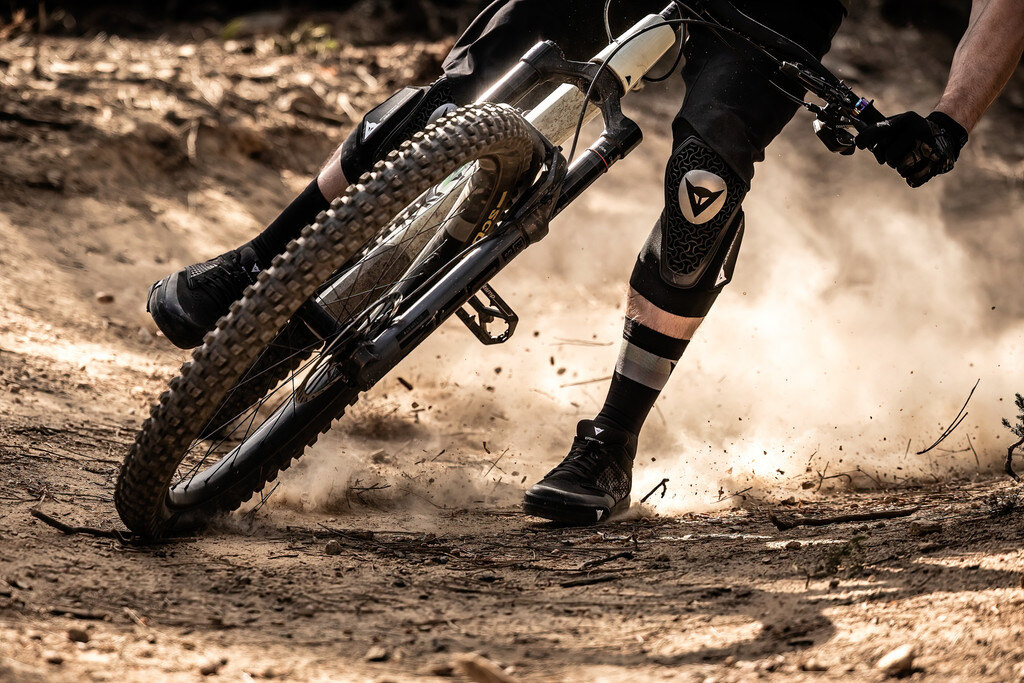
All things considered, it isn’t easy to choose the right mountain bike shoes for your needs and – as in many areas – here too, experience accumulated over years of activity allows you to navigate with confidence. Otherwise, the best strategy will start with clarifying how we’ll use our enduro bike (in the case of downhill, there’s only one possibility) so we can orient ourselves among the many possible features. Then, if possible, try on more than one model, to test the real fit relative to the shape of our foot.